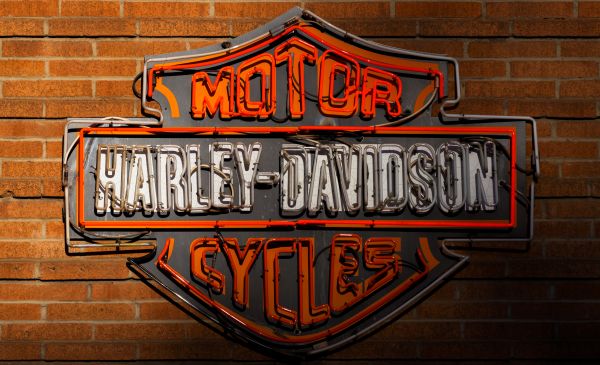[ad_1]

When a brand is in trouble, focus first on the core customer base. Love the customer you have before you focus on the customer you don’t have. When a brand is in trouble, re-energize, protect, and strengthen the core customer. It is the core customer that will profitably finance a turnaround and provide the platform for the future.
According to reporting in The Wall Street Journal, Harley-Davidson is in serious need of revitalization. Harley’s CEO, Jochen Zeitz is making a radical strategic shift to put Harley-Davidson back on the road to enduring profitable growth. Zeitz is ditching the plan he inherited. The previous strategy was to attract new, younger customers with smaller, less-powerful, inexpensive models. It did not work. Harley-Davidson turned off its core customer base. And, failed to attract new customers. To move the heavy, expensive Harley’s out of the dealerships, the big bikes were discounted, further hurting the image of the brand.
From now on, instead of cheap, smaller-displacement motorcycles, Harley-Davidson will concentrate on the big, expensive motorcycles that gave Harley its biker cred. His first order of business is to focus on Harley’s core customer base and what they love about owning a Harley.
Revitalization Begins At The Core
Focusing on core customers is the smart move for a brand that is in trouble. The immediate goal must be to restore and repair the brand relationship to the most valuable customers. This means reinforcing what they like about the brand. This is precisely what Mr. Zeitz is doing: he is not taking his core customers for granted. This is important because core customers – those with long-lasting brand loyalty – are especially valuable for profitability.
Taking core customers for granted is death-wish marketing. Unless you have customers who are captive audiences (airlines with specific routes), you run the risk of alienating people who are your valuable base. Love your loyalists. Adore your core.
Important research conducted in the 1990s by Frederick Reichheld (Bain consulting) demonstrated that as brand loyalty increases, the likelihood of defection due to competitive price promotions decreases. He concluded that reducing defections by 5% could increase profits by 25% and more.
Other research showed that the cost of attracting a new customer was 3-4 times as much as the cost of keeping a customer loyal. However, recent research from Kleiner Perkins, the venture capital firm (2018) indicated that customer acquisition costs are climbing. It costs more to acquire a new customer than to satisfy an existing customer.
Losing just a small percentage of core customers will account for a disproportionate amount of lost income for a brand. Harley-Davidson’s focus on attracting new customers at the expense of core customers was misguided. The result? Harley-Davidson suffered through a five-year streak of bad earnings.
Coronavirus has thrown many markets into disarray. However, a relatively small group of brand loyal customers can carry your brand to outlast the pandemic. Brand-businesses doing well during coronavirus, such as Campbell’s, Kraft Heinz, and Clorox can still maintain their increased sales.
Our research indicates that, on average, 10% of customers account for 50% or more of profits. A study reported in Harvard Business Review (2014) – that used Nielsen scanner data across 124 consumer packaged goods, showed that 10% of a category’s customers accounted for 30%-70% of sales and an even higher share of profits. For example, Kraft Velveeta data indicated that the brand’s major enthusiasts (10%) accounted for 50% of profits.
The Wall Street Journal stated the following in its analysis of Harley-Davidson, “The company’s introductions of new models over the years also failed to attract customers and the current line-up is loaded with slow-selling motorcycles. Eleven models combined accounted for about 6% of retail-sales volume last year, while ten popular models generated more than two-thirds of the sales.”
A large Harley-Davidson dealer commented on Mr. Zeitz’s focus on its core customers and their preferred motorcycles, “The brand is getting back to what we have always been.” Mr. Zeitz told analysts, “I’ve heard now so often that our consumer is aging out. Well, I’m aging, as they say, and I feel like riding right now.”
Turnaround Strategy Versus Growth Strategy
Of course, to grow and endure brands must attract new customers. However, a turnaround is different. When a brand is losing customers, the priority is to stop the hemorrhaging. After successfully shoring up the loyal base, the brand can focus on growth. Growth strategies are different. Successful brands recruit new customers, while at the same time, continue to focus on brand loyalty. Expand the appeal of the brand. Bring new customers into the franchise. But, don’t lose customer loyalty at the same time. Continuous churning of the brand’s customers is not the path to enduring profitable growth.
As reported in The Wall Street Journal, Harley-Davidson “delivered on its strategy.” Mr. Zeitz’s strategy of shoring up the core customer base led Harley-Davidson to a profit surge for its latest quarter ending September 27, 2020. Focusing on the core customer pays.
A turnaround strategy is different from a growth strategy. When a brand is in trouble, the priority is to stop the hemorrhaging of the customer base. Love your core customers if you expect them to love you. When a brand is losing sales and share, the first focus must be to shore up the core customer base. In other words, adore the core or your brand is done for. Ultimately, the healthy brand goal is more customers, more often, more brand loyal, more revenues, and more profit.
Contributed to Branding Strategy Insider by: Larry Light, CEO of Arcature
The Blake Project Can Help You Redefine And Articulate Your Value In: The Brand Positioning Workshop
Branding Strategy Insider is a service of The Blake Project: A strategic brand consultancy specializing in Brand Research, Brand Strategy, Brand Growth and Brand Education
[ad_2]
Source link


